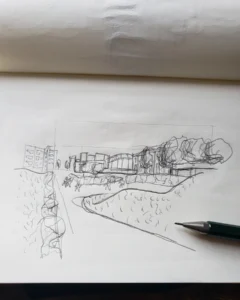
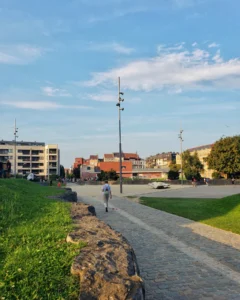
After the cacophony of consecutive transit layovers from a train to New York, to a plane to Oslo, to another plane to Berlin, I finally emerged out of the chaos of my final train with a red-eyed haze in Brussels. Arriving promptly in the early morning, I quickly shook off my fatigue with a sandwich and a coffee. I started at the north train station, and I spent the next few hours meandering south on foot. The foot traffic for me was comfortable, not being interfered much by other traffic flows. Many roads had been closed for pedestrian exclusivity, and the vehicular traffic that did exist was clearly delineated in appropriate lanes (car, bike, walk).
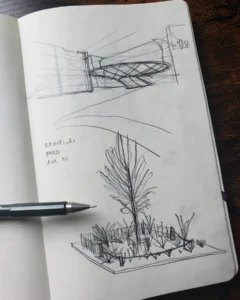
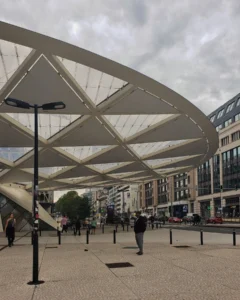
I found my way to my hostel in the afternoon to be surprised by the pleasant encounter of some new friends. Brussels was very quickly beginning to open up to me as a city where I could reside. Taking more trips around during that first day, the city felt less flashy than I had imagined. There was an atmosphere more in tune with what I was familiar in Philadelphia. The city was a patchwork quilt of neighborhoods, but still very closely tied to each other artisically, organizationally, and culturally.

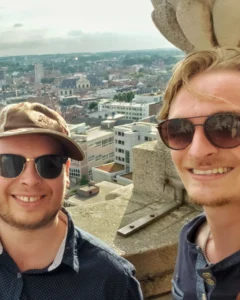

Over the next few days, I took every opportunity to venture outside of the city center. Locally I was able to receive recommendations and even occasional tours from the locals whom I acquainted myself. Brussels felt very small-town-esque. It was comfortable for wayfinding, and despite having out of the city center, I kept finding myself passing places I had been. That is not to say navigation was always so intuituve. At this point I was familiarizing myself with the metro system: although it was speedy and efficient, it was terribly confusing. Lines cross at odd angles, intersections with roads, pedestrian paths through metro rails, and a bilingual split between French and Dutch that constantly tampered with the naming of locations and stations. Nonetheless, I could get to where I needed to be in a timely fashion.
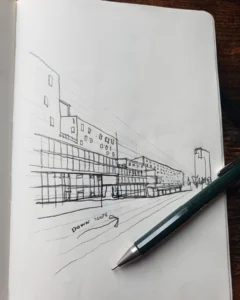
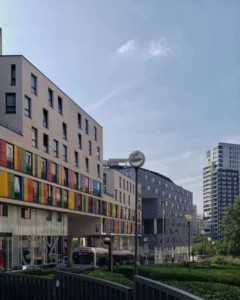
When I found myself in the periphery, there was always a free public event of some sort. In the Parc du Cinquantenaire I stumbled across a Latin color festival, and in Leuven I experienced a suburban street festival combined with a flea market. There was an apparent recognition for the value of providing lovely, free events to the citizens that is still very foreign to me. These events seemed to be so numerous and available that many people chose not to even attend. Outside the events I would find people relaxing and playing in completely unrelated contexts.
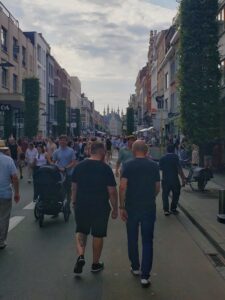
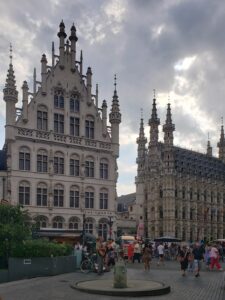
I visited some lower-class neighborhoods as well to analyze how the city responds to public safety needs. The cleanliness level (of things like litter) were kept constant throughout my walks, despite the class of the area. The lower class areas still had decent tree coverage, adequate transit access, and open spaces where a citizen’s surroundings are kept visible (as opposed to tight spaces where aggressors may hide). I felt safe in most of my walks, although I was accompanied by new friends for some.
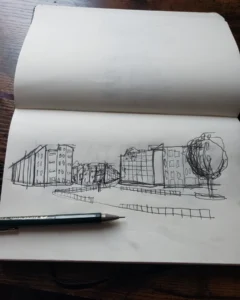
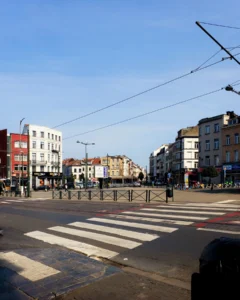
As for the historicism imbedded in the city, I was absolutely enamored by the diverse layering effect of Flemish tradional with French tradional all juxtaposed to modern high-rise. One of the first things to note about Brussels was its cosmopolitan energy, and the scattered but interwoven styles of its buildings absolutely reflected this worldy union. There were of course some sad scenes of historic decays as a more historic neighborhood was readapted for white-collar or business use, but I appreciated the streetview moments where the two could coexist.
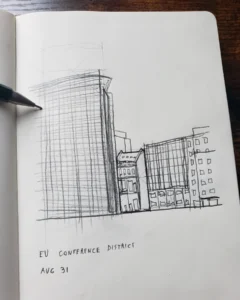
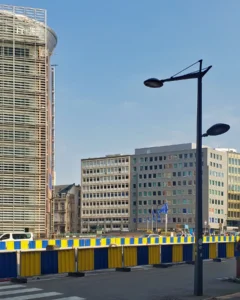
As I told one of my new friends as I left, Brussels does not seem like a quick-vacation city, but rather a city with which I would fall in love after a long stay. The character felt welcoming and authentic, and something has captured my attention. I do not believe that my time with Brussels has ended, and I await the day when I may return.


